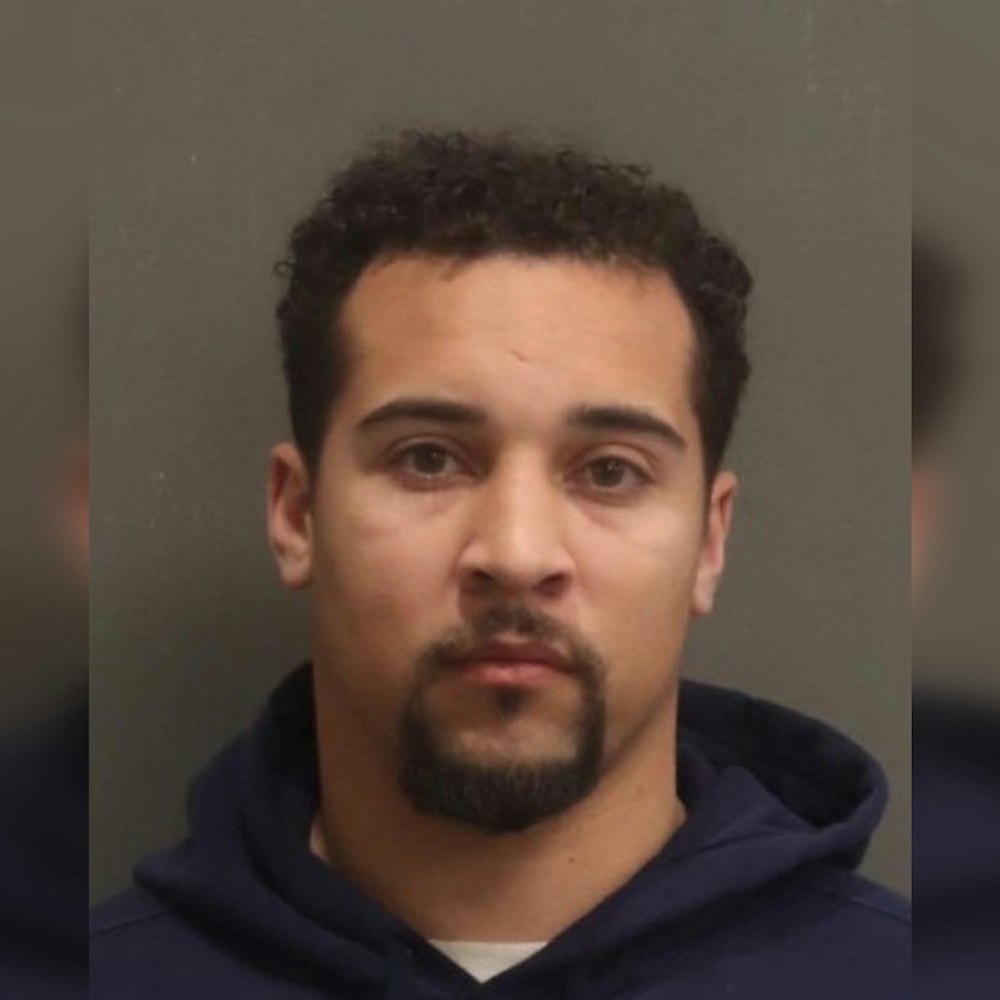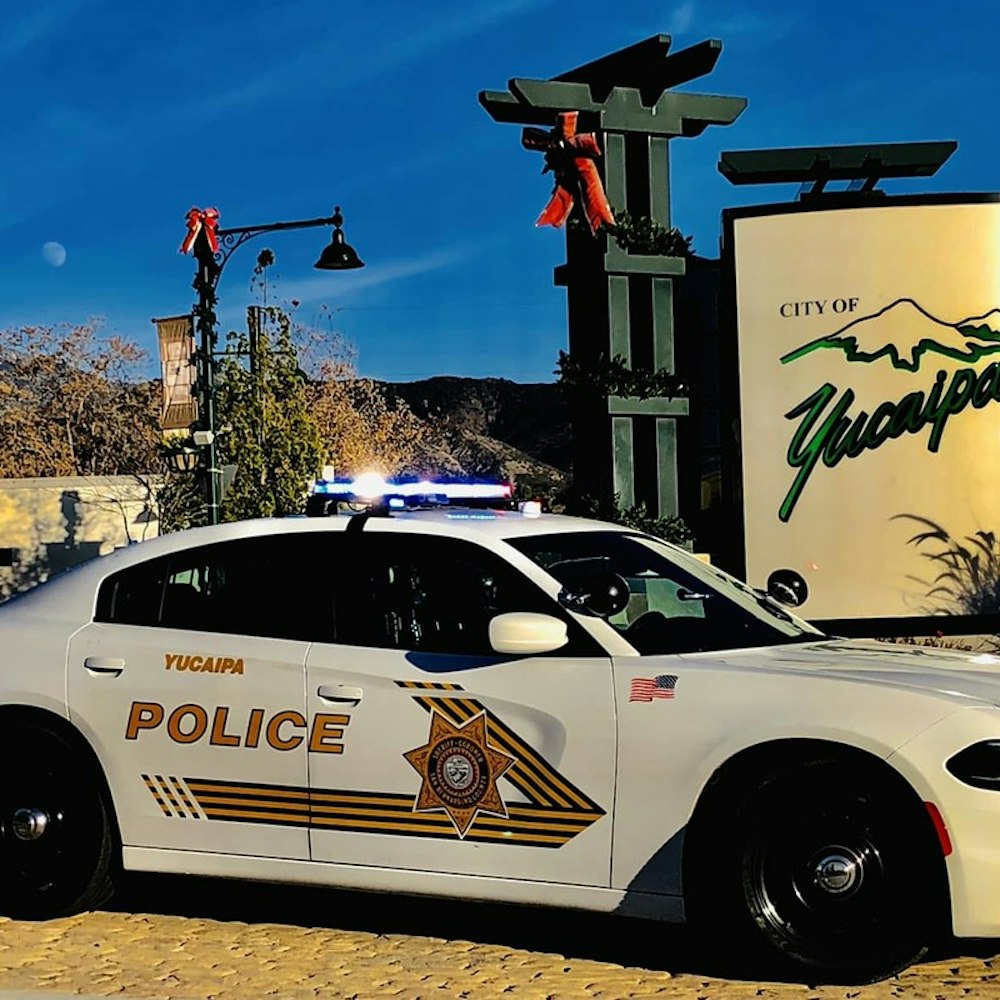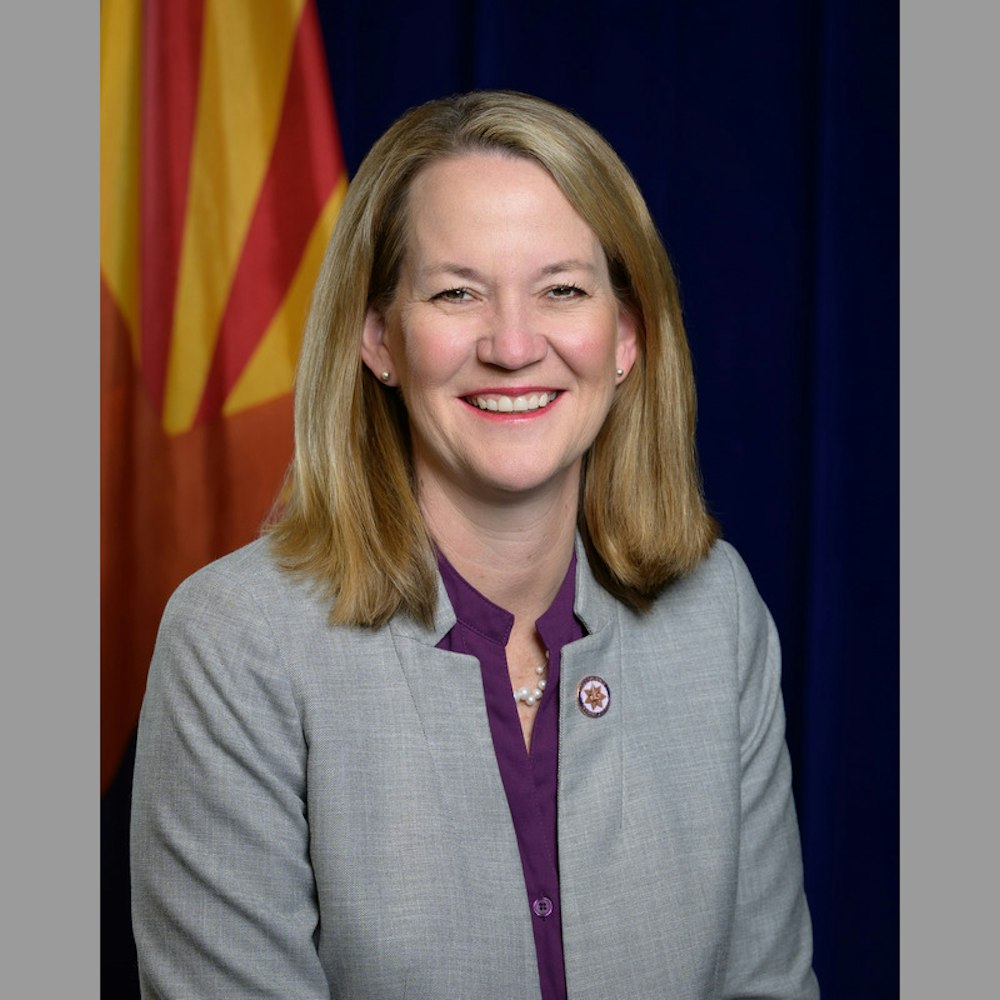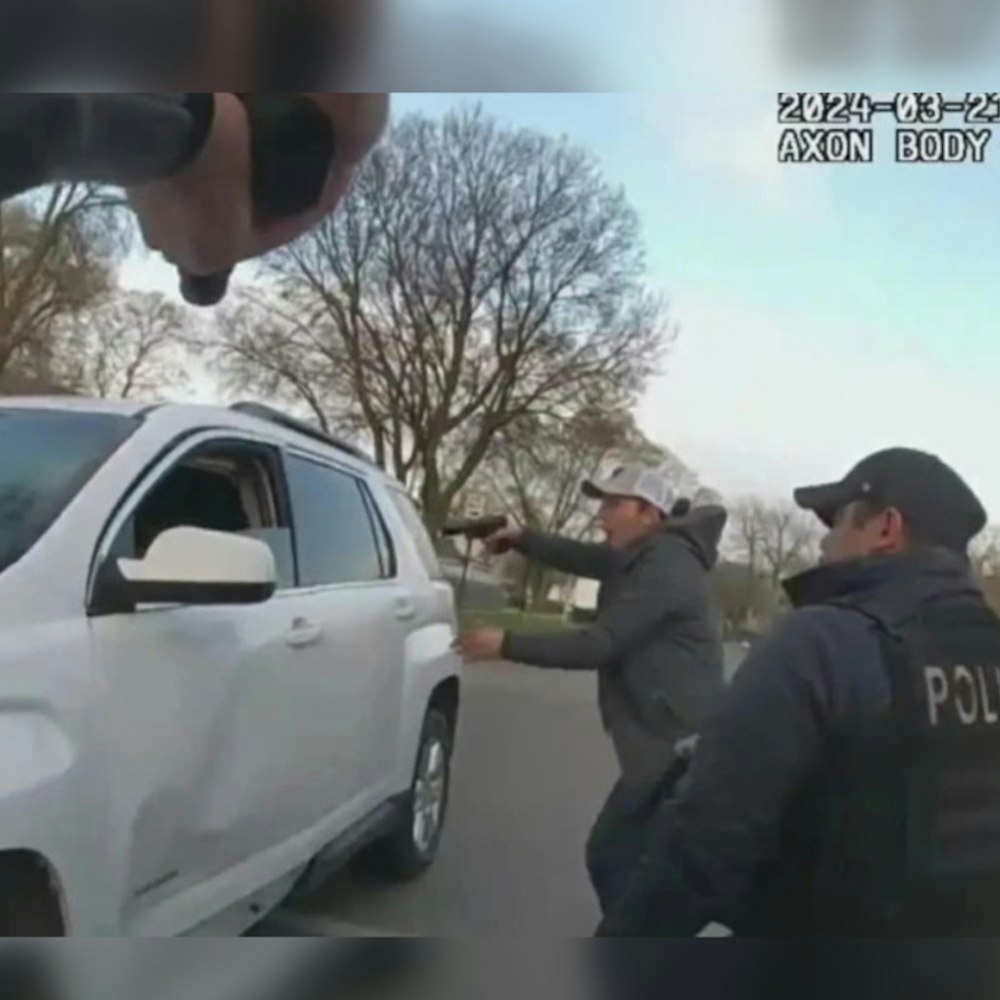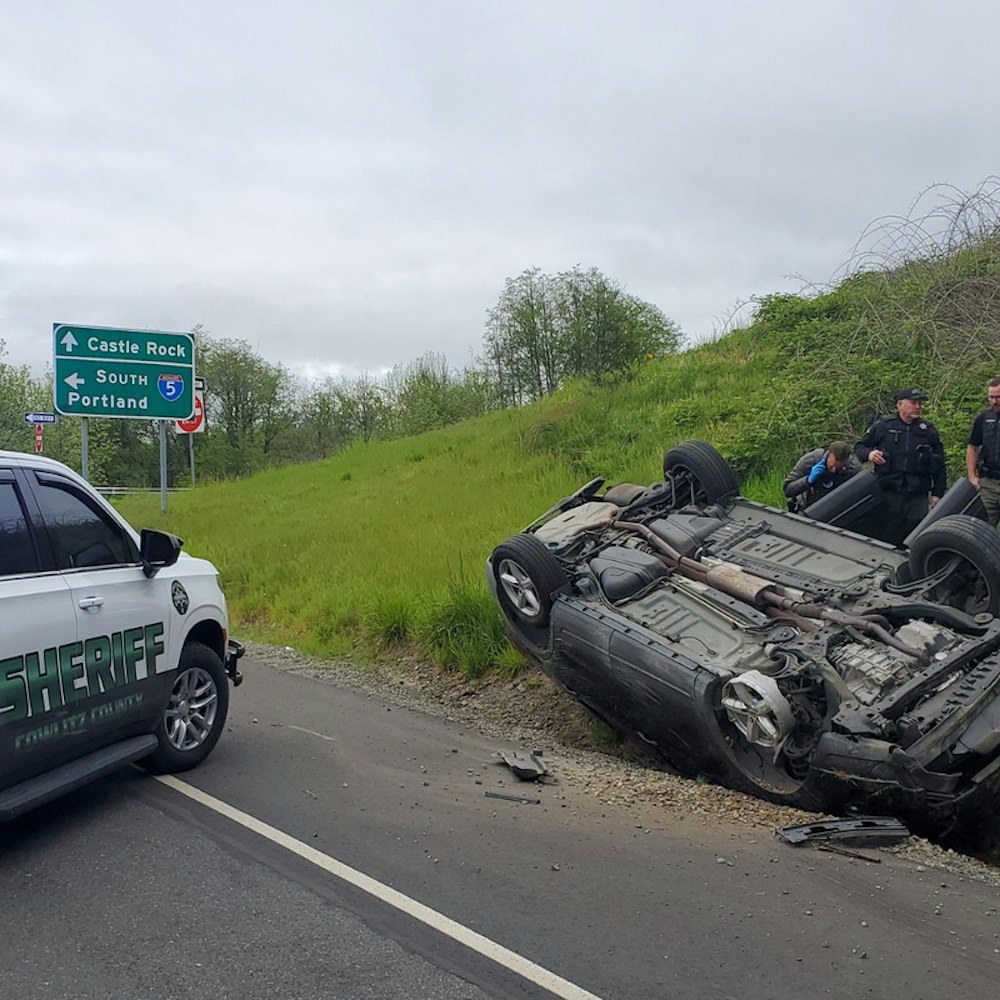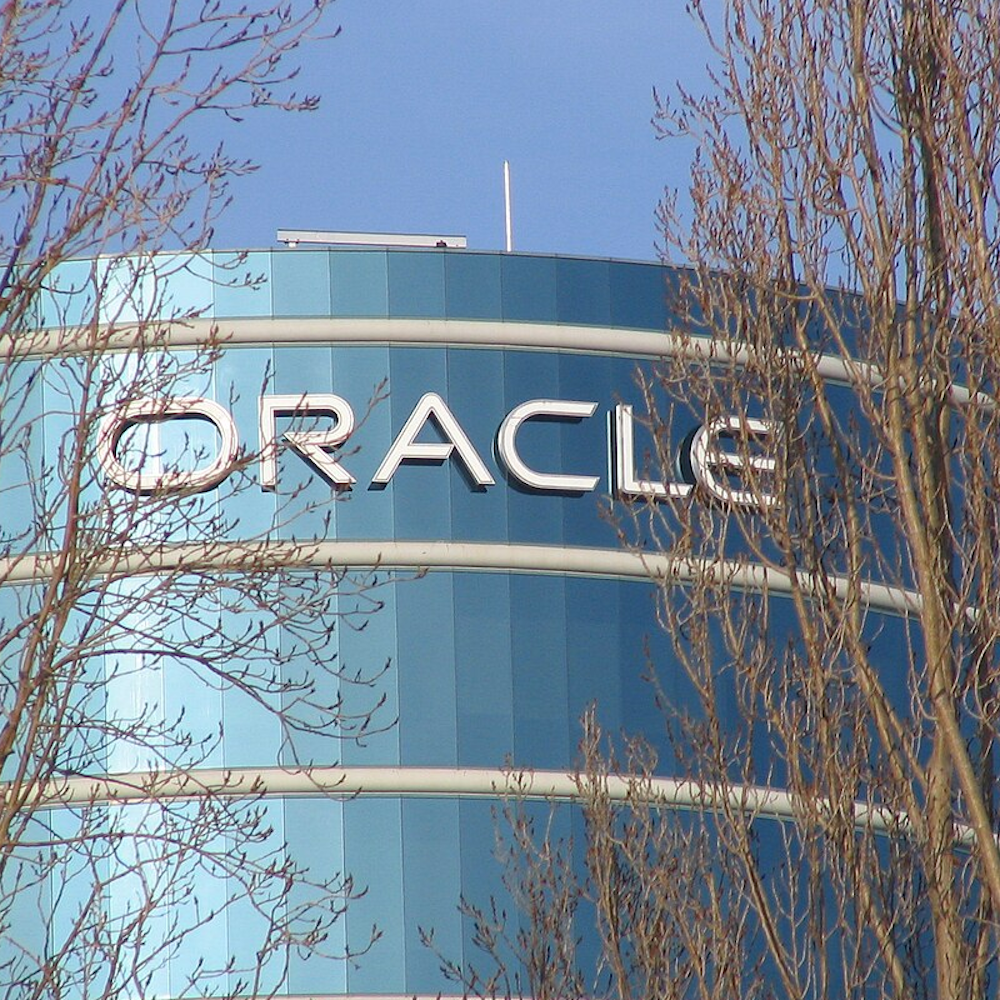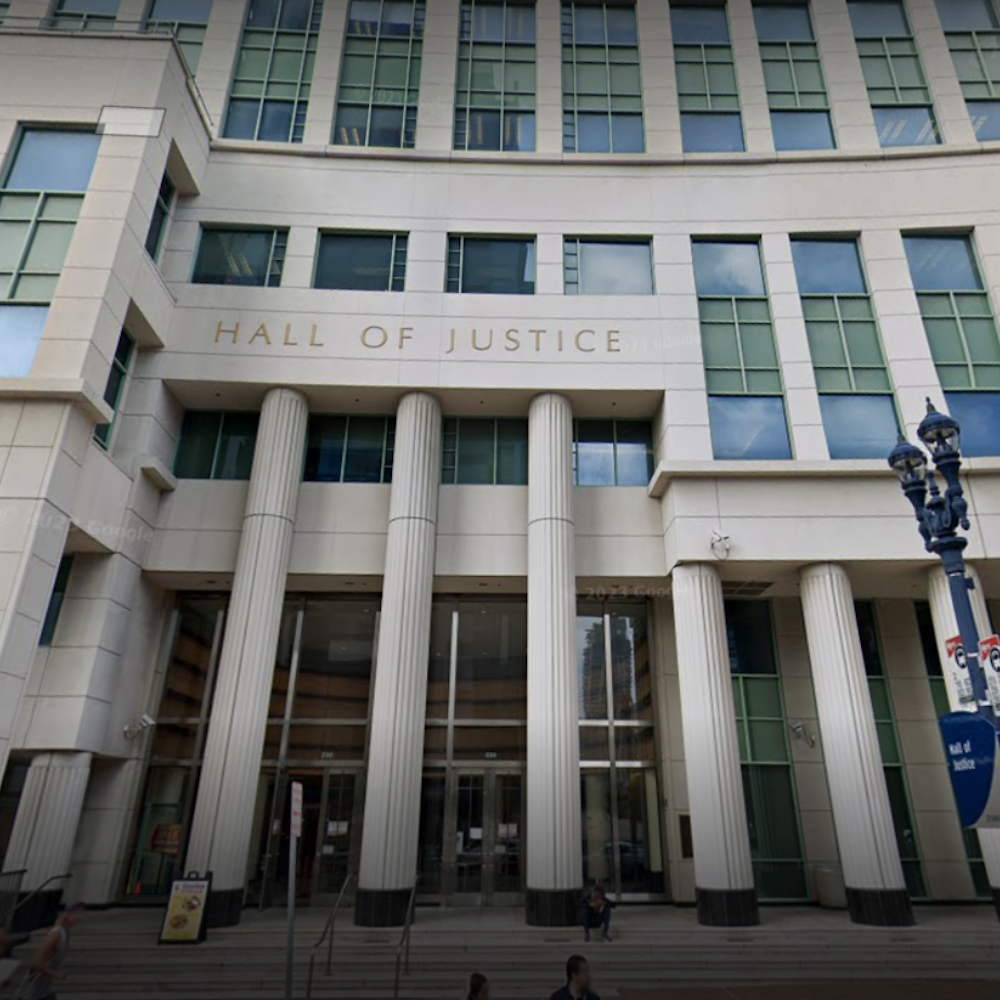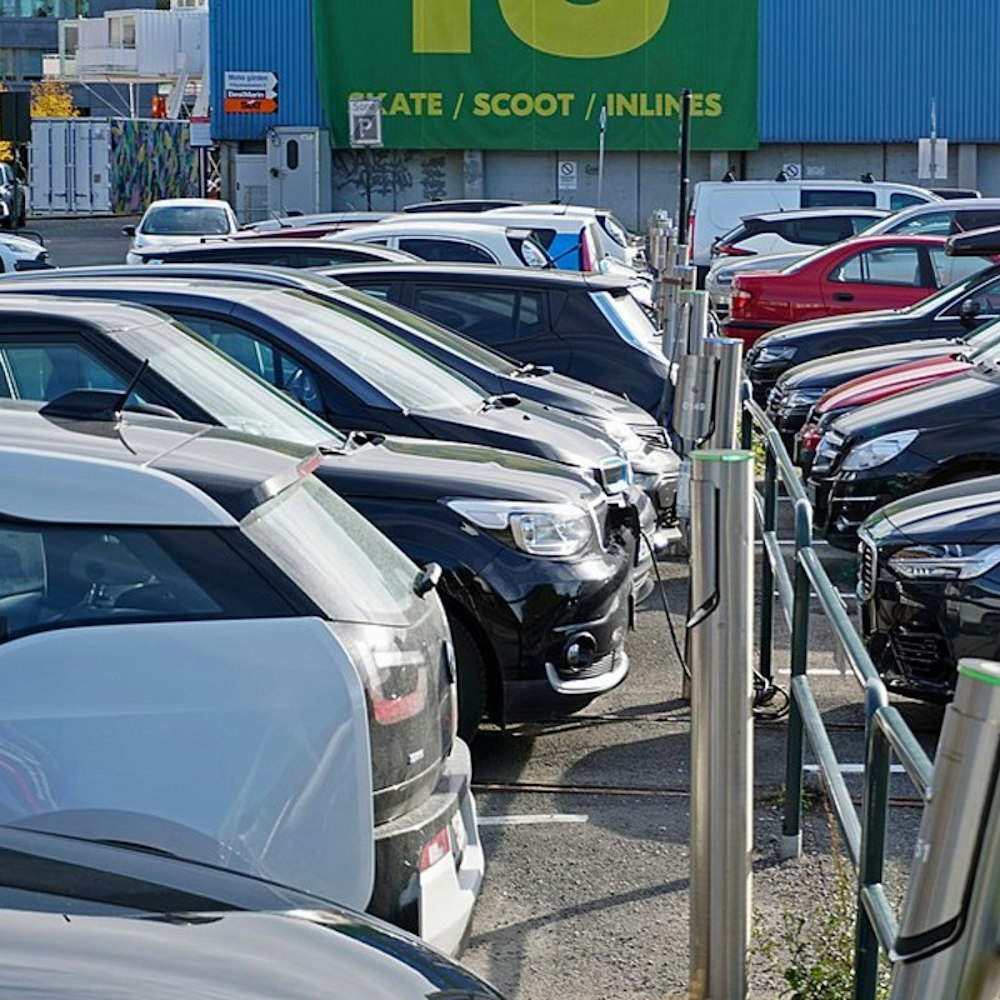
As we noted last week, Washington Square Park is in need of some TLC. The questions that remain are: What should be done, and what can be done?
At a Friends of Washington Square community meeting from 6–7:30pm last night, about 20 people looked on as landscape architect and urban designer David Fletcher gave a presentation on some of the possibilities to consider based on work his company, Fletcher Studio, did on South Park in SoMa.
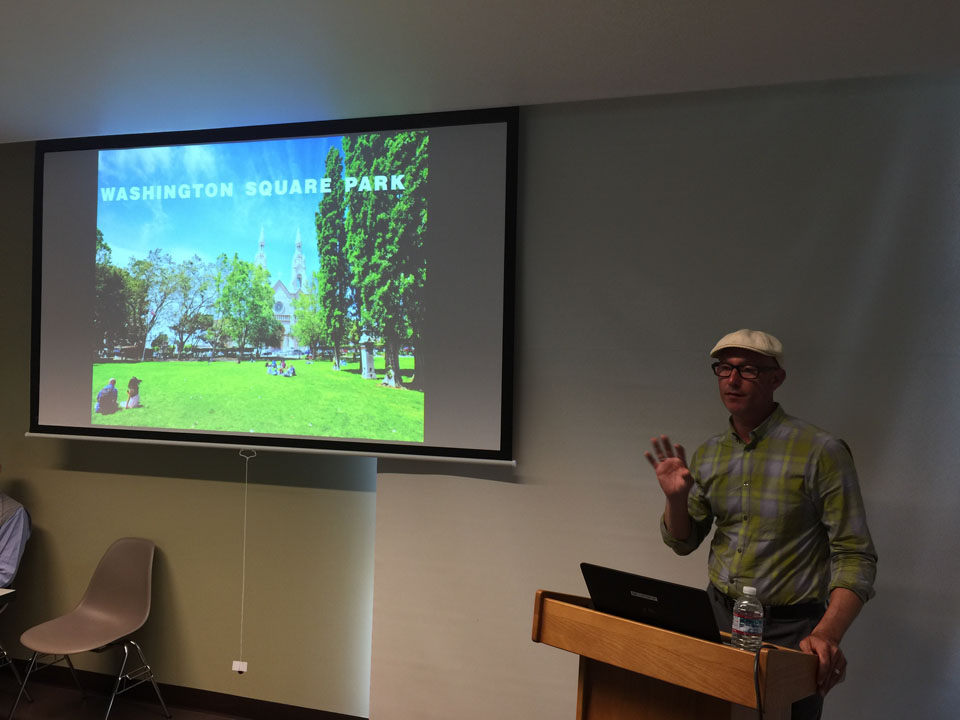
David Fletcher. Photo: Geri Koeppel/Hoodline
Afterward, District 3 Supervisor Julie Christensen raised questions about limitations on park improvements due to historical landmark status and other considerations, but also suggested she might be able to help with funding a master plan.
Ken Maley of Friends of Washington Square started the meeting by giving some history of the park and saying that a master plan was needed so projects won't be done as a "hodgepodge." He said the new restroom building, which opened March 14th, was the first capital addition to the park since 1957.
Still, the park needs lighting, repaving and a new irrigation system, because the current one "wastes hundreds of thousands of dollars of water every year," Maley said.
Friends of Washington Square Park wants the projects done thoughtfully, with expert input, in order to avoid missteps. For example, they don't want to add new hardscape only to have to tear it up for an irrigation system. A master plan can also help with finding funding, Fletcher said in a later interview. "A small investment in creating an organized and consensus-based plan can appeal to many different funding sources," he said.
Maley introduced Fletcher, who delivered a Power Point presentation showing how his studio modeled the renovations to South Park, but noted that "every project deserves its own solution."
He said that before creating a master plan, designers analyze a number of things, including how people use the space, how water is flowing, solar exposure, where existing trees are located and other physical aspects as well as the history and chronology of the space. After that, they make three-dimensional models of the park as it exists.
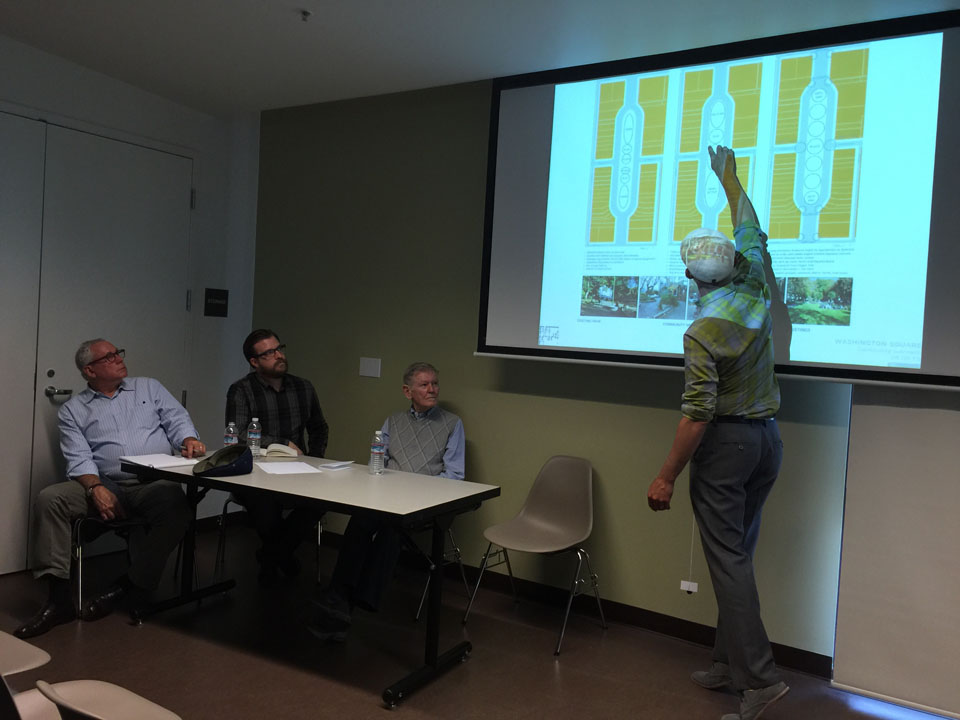
Craig Heckman, Corey Hallam, Ken Maley and David Fletcher. Photo: Geri Koeppel/Hoodline
On the South Park project, Fletcher said, they then brainstormed and held community meetings on how the space should be used and configured to support diverse needs. They took the comments and created a diagram of what the park ideally would look like. They solved specific problems such as water drainage, and also came up with meandering paths for strolling and safety enhancements, including improved lighting, new crosswalks, curb ramps, warning strips and textured intersection paving.
"We also wanted to increase the amount of amenities,” Fletcher said, but wanted them to be "very tasteful, very simple, very modern." They put in custom wood benches and various types of seating for various ages and users, including benches with laptop trays. All of the materials are "honest" and "not painted some crazy color," he said. "It's metal or stainless steel or galvanized wood. If it's wood, it's not sealed."
Fletcher also talked about hardscaping and plants, saying that pavers would be preferable to pavement in Washington Square Park because they can be taken up and replaced easily if digging needs to be done. He mentioned smart controls on irrigation systems and lighting that can save water and electricity. And he pointed out a series of stages that were added to South Park that could be used for live performances, and discussed a custom play structure that was more universally appealing to all youth age groups.
Incidentally, some structures at Washington Square Park's playground are currently closed because the materials were treated with preservatives and aren't environmentally friendly. The playground will be renovated with funds from the 2012 parks bond.

Washington Square Park playground. Photo: Geri Koeppel/Hoodline
Funding for the South Park project came from a variety of sources, Fletcher said, including donor plaques, donations, challenge grants, the 2012 parks bond, developer impact fees and the South of Market Community Stabilization Fund.
After Fletcher's presentation, Christensen said the community had looked into pavers in Washington Square Park and were told they weren't ADA accessible. However, Craig Heckman of Friends of Washington Square noted that landscape architects are now using pavers without running into that issue. "Times have changed," he said.
Another point of discussion was that much of the funding used for South Park isn't available for Washington Square Park, Christensen said, particularly developer impact fees and anything more from the 2012 parks bond.
However, she did say that Joe DiMaggio Playground, which is currently closed for major renovations, and Pioneer Park received money from grants. "We’ve got great demographics for grant funding because we have such diversity in the neighborhood," she said, adding that another possibility might be a self-imposed property tax for park funding, such as the Green Benefits District in the works for Dogpatch and Potrero Hill.
"Practically everything in the park except the new bathrooms are landmarked," Christensen said. "Benches, lights, trees. We have a lot of restrictions about what can be changed.” Even resurfacing the walkways has to go through the historic advisory process, Maley added.
Fletcher said one of the first things that should be done is to meet with the Planning Department's historic preservation program for parameters.
Later, an audience member asked, "What’s the point of calling this a master plan if nothing can be done?"
Christensen said, "If you have a goal that is agreed to by the neighborhood and the [Planning] Department, you’re much more likely to move ahead.”
Stephanie Greenburg also asked what are the next steps. "I think this informs us as to what the challenges are," said Heckman. "I think it helps the advisory board talk in the next meeting about phasing we need to do."
Maley, in an earlier interview, said the master plan might cost $25,000 to $50,000, and in the meeting said he's approached businesses on the perimeter of the park to help with fundraising with that.
"It’s a matter of convincing them that the amount we’re asking is a reasonable amount," he said.
Christensen added that a small amount of funding—perhaps $5,000 or $10,000—might be available from the supervisor's discretionary fund.
